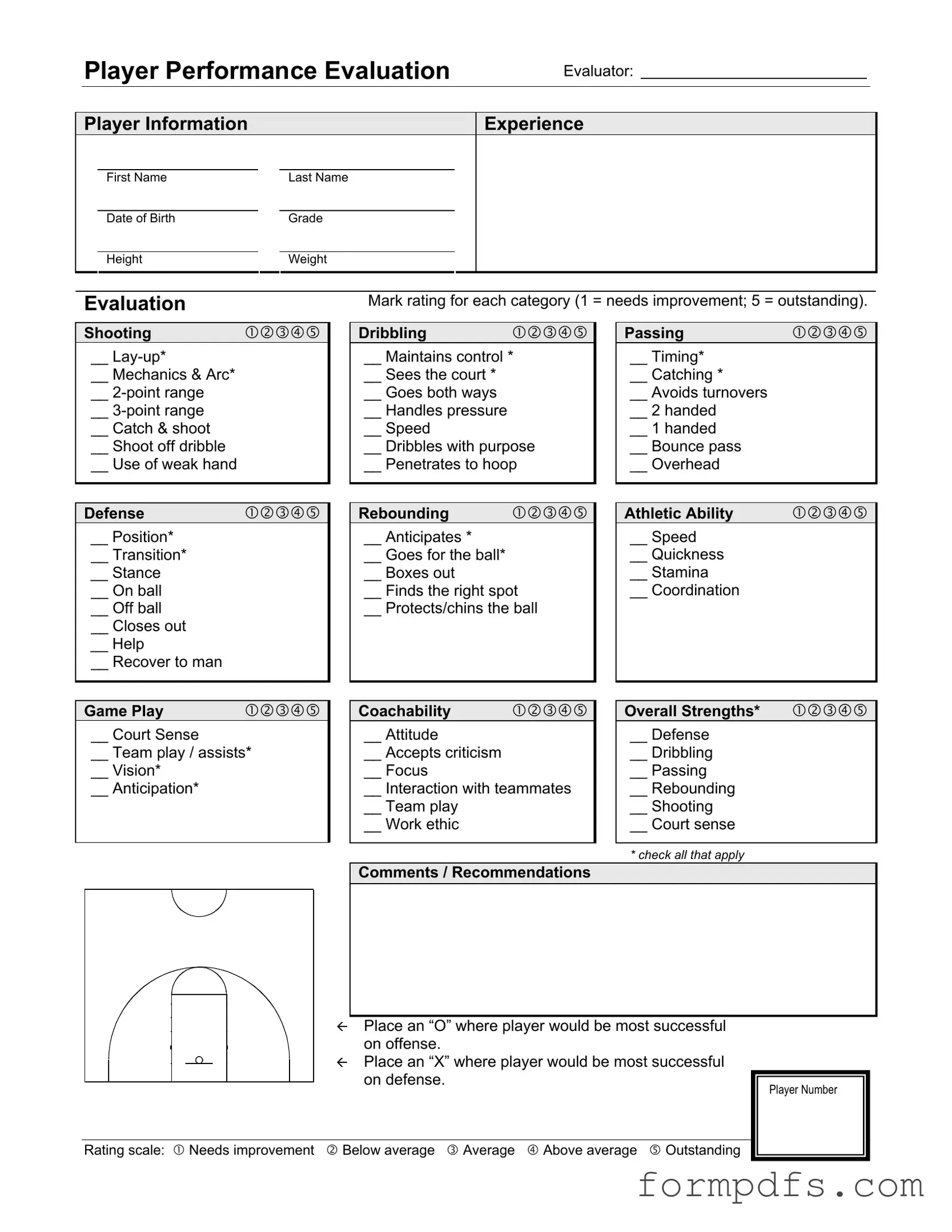What is the purpose of the Basketball Evaluation form?
The Basketball Evaluation form is designed to assess a player's skills, strengths, and areas for improvement. Coaches and evaluators use it to provide structured feedback on various aspects of a player's performance, including shooting, defense, dribbling, and overall athletic ability. This helps players understand where they excel and what they need to work on to enhance their game.
Who fills out the Basketball Evaluation form?
The form is typically filled out by coaches or evaluators who observe the player during practices and games. Their insights are crucial for providing an accurate assessment of the player's abilities and potential. It may also be beneficial for players to review the form with their coaches to gain a deeper understanding of their evaluation.
What does the rating scale mean?
The rating scale ranges from 1 to 5, where 1 indicates that a player needs improvement, and 5 signifies outstanding performance. This scale helps to categorize each skill area clearly, making it easier for both players and coaches to identify strengths and weaknesses. A rating of 3 would typically mean the player is performing at an average level.
What categories are evaluated on the form?
The evaluation covers several key categories: shooting, defense, dribbling, rebounding, passing, athletic ability, game play, and coachability. Each category includes specific skills, allowing for a comprehensive assessment of the player's overall performance. This detailed approach ensures that no important aspect of a player's game is overlooked.
How can players use the feedback from the evaluation?
Players can use the feedback to set personal goals and focus their training efforts. Understanding which areas need improvement allows them to target specific skills during practice. Additionally, players can discuss the evaluation with their coaches to develop a tailored training plan that addresses their unique needs.
What should players do if they disagree with their evaluation?
If a player disagrees with their evaluation, it’s important to approach the coach or evaluator respectfully. Open communication is key. Players should express their concerns and ask for clarification on specific ratings. This dialogue can lead to a better understanding of the evaluation process and may provide additional insights into the player’s performance.
What do the symbols “O” and “X” represent on the form?
The “O” indicates where the player would be most successful on offense, while the “X” marks the areas where the player is likely to excel on defense. These symbols help to visualize the player's strengths in different game situations, guiding coaches in making strategic decisions about player positioning during games.
Is there a section for comments or recommendations?
Yes, the form includes a comments section where evaluators can provide additional feedback or recommendations for the player. This section is valuable for offering personalized advice, highlighting specific areas for improvement, or acknowledging notable achievements during the evaluation period.
How often should evaluations be conducted?
Evaluations should be conducted regularly, ideally at the start and end of each season or at key points throughout the season. This allows for tracking progress over time and adjusting training plans as needed. Frequent evaluations ensure that players receive ongoing feedback, which is crucial for their development.
Can the Basketball Evaluation form be used for all age groups?
Yes, the Basketball Evaluation form can be adapted for players of all age groups. While the skills being evaluated remain consistent, the expectations may vary based on the player's age and experience level. Coaches can modify their feedback accordingly to suit the developmental stage of the player.
